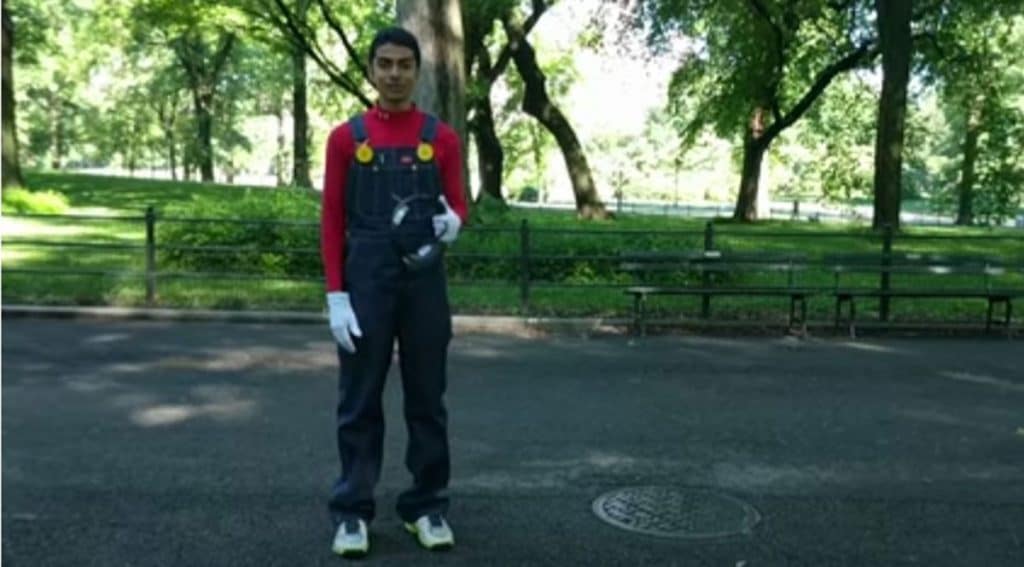A person in a Mario costume jumping around a park with a weird contraption around his head. A string of curious onlookers and a few puzzled passersby. This is how it looked to everybody who saw 28-year-old Abhishek Singh, a New York University graduate, conducting a real-life video game experiment in New York’s Central Park.
Singh took the internet by storm when he created a real-world augmented reality (AR) demo of Super Mario Bros. He stepped aside to evade Goombas (in-game enemies) and jumped to secure the falling mushrooms, on his way to rescue Princess Toadstool from the castle.
Singh, also a cofounder of a live streaming startup, has recreated a single level of the classic game in a real-life environment. In the AR game he walks around the hurdles and leaps across the deadly drops to demonstrate the life-sized first-person experience of Super Mario. The experiment has showcased the immense potential of ‘mixed reality’.
“The entire experience was built in Unity and took about a month to complete. I also had to model all the assets and elements of the game and rethink the experience from a real-world 3D perspective. It was much harder than I anticipated. The most time was probably spent on tweaking the game to work in a large outdoor setting,” said Singh in an email interview to Little India.
After completing his under graduation from H.R College in Mumbai, Singh headed to NYU to graduate in Interactive Telecommunications Program. As he filmed the entire demo and uploaded it on YouTube, little did he think that the video would go viral.
“I wanted to make some sort of outdoor running experience. While learning the absolute basics of Hololens development (a virtual reality headset with transparent lenses for an augmented reality experience), I literally placed a cube in a scene and for some reason jumped right under it and that’s when the idea of recreating Mario struck me. I grew up playing Mario and it was as if it all the memories came rushing back.”
From the idea to the final product, the video took a month to shape up and it was entirely a one-man show. Shot directly from his Microsoft Hololens headset, the video garnered more than nine lakh views in a week.
Around the same time last year, the world was temporarily taken over by Pokemon Go, a location-based augmented reality game developed by Niantic for iOS and Android devices. Though he says his experiment with the ‘outdoor-Mario’ was not inspired by Pokemon Go, Singh believes that new-age gaming has immense potential when it comes to fitness or travel.
“Personally, I’m really into fitness and always envisioned AR as a way to make workouts or even everyday traveling more fun and entertaining. From the time I started working with the Hololens I knew I wanted to create an outdoor experience of sorts that involved some running. That’s a reason I built an outdoor game in the first place.”
India is way behind in leading with any of these innovations. It is seen as a lucrative market by tech giants of the world but the sizeable community of explorers and followers of latest tech has not catalyzed innovation.
Singh, who previously created peeqo.com — a voice activated desktop assistant that responds entirely through gifs — and a 20-foot dragon that you can ride to get an experience of controlling a dragon in a virtual world, believes that it is not the lack of talent but the lack of accessibility that is hindering an innovation boom in India.
“A lot of that has to do with these technologies entering India much later than when they enter the west. Amazon is releasing Alexa in India now, almost two years after it was launched in the states, and that is just one such example. Accessibility is the biggest barrier. If you remove that, I don’t see us being followers anymore.”
